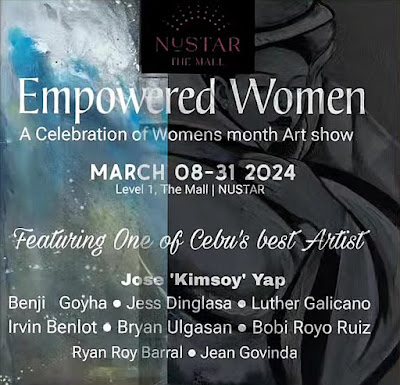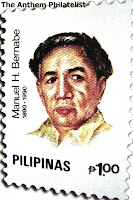The Historic Town of Vigan
 The City of Vigan is a 5th class city in the province of Ilocos Sur, Philippines. It is the capital of the Province of Ilocos Sur. The city is located on the western coast of the large island of Luzon, facing the South China Sea.
The City of Vigan is a 5th class city in the province of Ilocos Sur, Philippines. It is the capital of the Province of Ilocos Sur. The city is located on the western coast of the large island of Luzon, facing the South China Sea.It is a World Heritage Site in that it is one of numerous Hispanic towns in the Philippines, and is well-known for its cobblestone streets, and a unique architecture that fuses Philippine building design, and construction with colonial European architecture. According to the latest Philippines census, it has a population of 47,246 people in 9,193 households. Former Philippine president Elpidio Quirino, the 6th president of the Philippines, is born in Vigan, at the current location of the Provincial Jail (his father was a warden); and resided in the Syquia Mansion.
Vigan is an island which is separated from the mainland by three bodies of water: the Abra River, the Mestizo River, and the Govantes River. The city is unique in the Philippines because it is one of many extensive surviving Philippine historic cities, dating back to the 16th century.
Vigan was a coastal trading post long before the Spaniards arrived; Chinese traders sailing from the South China Sea came to Isla de Vigan (Island of Vigan) via the Mestizo
 River that surrounded the island. On board their ships were sea-faring merchants that came to trade goods from other Asian kingdoms in exchange for gold, beeswax, and other mountain products brought by the indigenous peoples from the Cordilleras region. In the book The Philippine Island (Vol. III, p. 276, Blair and Robertson) two letters from Governor General Guido de Lavezaris to King Philip II of Spain mention: "It seemed best to send Captain Juan de Salcedo with 70 or 80 soldiers to explore the coast of Los Ilocano on the shores of the river called Bigan." The Spaniards marched north from Manila on May 20, 1572 and arrived in Vigan on June 12, 1572.
River that surrounded the island. On board their ships were sea-faring merchants that came to trade goods from other Asian kingdoms in exchange for gold, beeswax, and other mountain products brought by the indigenous peoples from the Cordilleras region. In the book The Philippine Island (Vol. III, p. 276, Blair and Robertson) two letters from Governor General Guido de Lavezaris to King Philip II of Spain mention: "It seemed best to send Captain Juan de Salcedo with 70 or 80 soldiers to explore the coast of Los Ilocano on the shores of the river called Bigan." The Spaniards marched north from Manila on May 20, 1572 and arrived in Vigan on June 12, 1572.Thus, after the successful expedition and the exploration of the North, Juan de Salcedo founded "Villa Fernandina de Vigan" in honor of King Philip II’s son, Prince Ferdinand, who died at the tender age of four. From Vigan, Salcedo rounded the tip of Luzon and proceeded to pacify Camarines, Albay, and Catanduanes.
As a reward for his services to the King of Spain, Salcedo was awarded the old province of Ilocos which consisted
 of the modern provinces of Ilocos Norte, Ilocos Sur, Abra, La Union and a part of Mountain Province as his hacienda (estate), and was accorded the title of "Justicia Mayor de esta Provincia de Ylocos" (Province Mayor of Ilocos). In 1576, Salcedo returned to the capital of his encomienda (trusteeship), Vigan, bringing with him his soldiers, and some Augustinian missionaries to pioneer the evangelization of the Ilocos region. He established a Spanish city for the purpose of controlling the neighboring country.
of the modern provinces of Ilocos Norte, Ilocos Sur, Abra, La Union and a part of Mountain Province as his hacienda (estate), and was accorded the title of "Justicia Mayor de esta Provincia de Ylocos" (Province Mayor of Ilocos). In 1576, Salcedo returned to the capital of his encomienda (trusteeship), Vigan, bringing with him his soldiers, and some Augustinian missionaries to pioneer the evangelization of the Ilocos region. He established a Spanish city for the purpose of controlling the neighboring country.Governor General Gómez Pérez Dasmariñas, in his Account of encomienda dated in
 Manila on May 31, 1591 states: "The town of Vigan called Villa Fernandina consisted of Spanish settlers; a priest; a Justice Alcalde Mayor (Governor); and a Deputy. The King collects 800 tributes (equivalent to 3,200 subjects)." During this period, Vigan was composed of 19 barrios (districts). Between 1645 to 1660, Vigan was divided into 21 Cavezas de Barrios (Town Mayors) as mentioned in the Libro de Casamiento (Book of Marriage); from the records of the parish house of Vigan found in its Archives. Separated from the indigenous population; the Chinese migrants were residents in a neighborhood called pariancillo, Los Sangleyes del parian (The Sangleyes of Parian); and the Spanish settlers were residents in a town called Los Españoles de la Villa (The Town of the Spaniards).
Manila on May 31, 1591 states: "The town of Vigan called Villa Fernandina consisted of Spanish settlers; a priest; a Justice Alcalde Mayor (Governor); and a Deputy. The King collects 800 tributes (equivalent to 3,200 subjects)." During this period, Vigan was composed of 19 barrios (districts). Between 1645 to 1660, Vigan was divided into 21 Cavezas de Barrios (Town Mayors) as mentioned in the Libro de Casamiento (Book of Marriage); from the records of the parish house of Vigan found in its Archives. Separated from the indigenous population; the Chinese migrants were residents in a neighborhood called pariancillo, Los Sangleyes del parian (The Sangleyes of Parian); and the Spanish settlers were residents in a town called Los Españoles de la Villa (The Town of the Spaniards).





